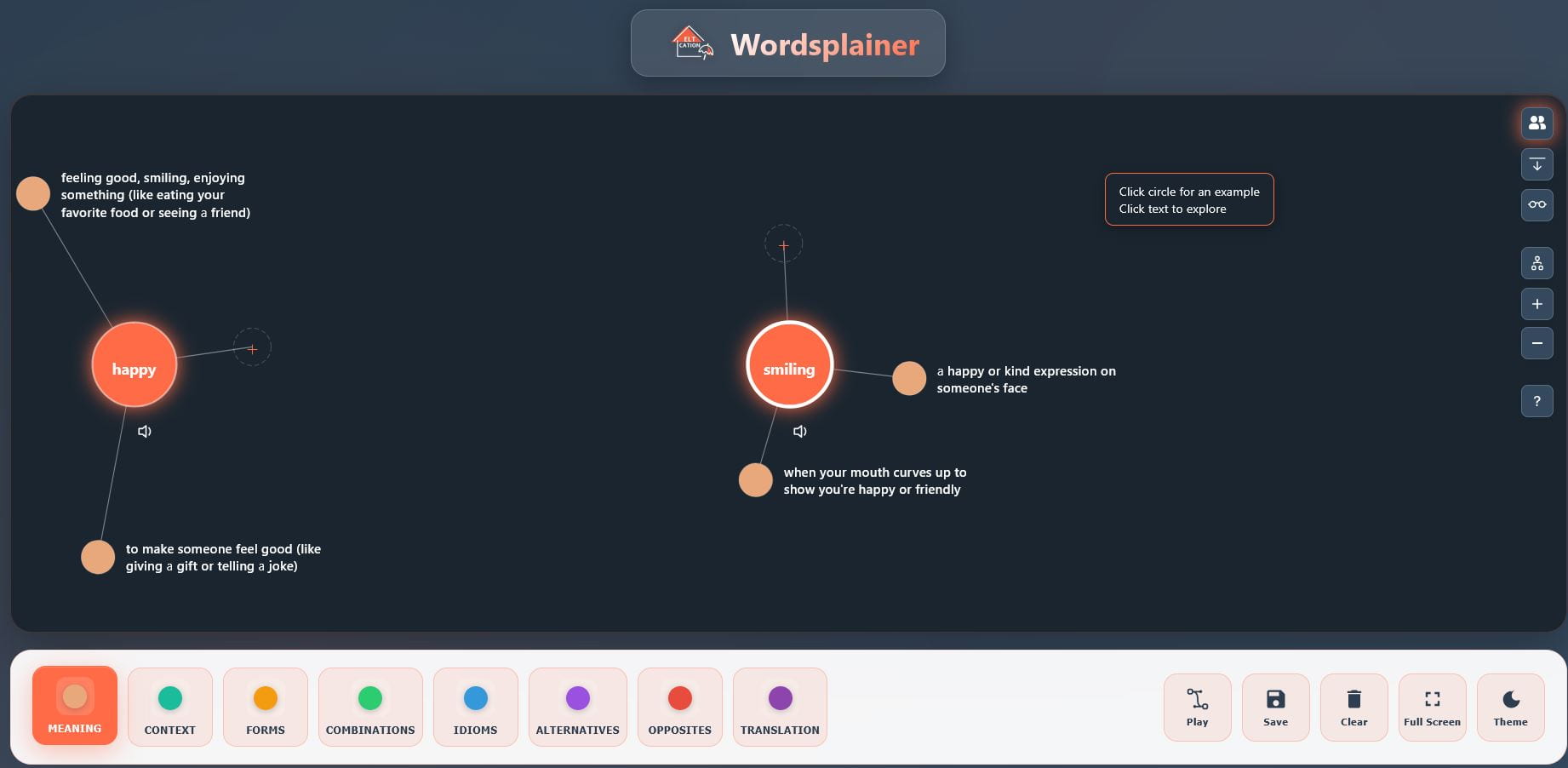
The Best Tools For Visualizing Connections Between Words
A fun way to have any student, particularly those who are English Language Learners, to learn about synonyms, opposites and just about any kind of connection between words is to have them use one of several sites that allow them to see those connections visually.
I’ve had a list of those sites at the The Best Reference Websites For English Language Learners, but thought it would be useful to update them and put them on a separate “Best” list.
Here they are:
The latest, and perhaps best, one is another amazing tool from Svetlana Kandybovich. It’s called Wordsplainer, and you can also read her explanation of it here.
Lexipedia is a pretty darn impressive site. This can fit under many of the categories in this section. You type in a word, and, in an engaging visual display, shows you a ton of information about that word and lets you get the audio of the word pronounced.
Visuwords is another unique, and fun, way to find synonyms in a visual display. It’s free, and it also functions as a dictionary.
Snappy Words is a similar tool.
WordSift came out several years ago as a great tool to help English Language Learners develop academic vocabulary knowledge. Mary Ann Zehr wrote an excellent description of it at Ed Week, and I put it on The Best Websites For Developing Academic English Skills & Vocabulary. It was created by Stanford Professor Kenji Hakuta. Then, it seemed to disappear. I started getting requests from educators for alternatives. Now, it’s back! WordSift 2 has launched. Paste in a text, and you get all sorts of stuff in return — word clouds sorted in various categories, images of words to enhance understanding, sentences showing the words in context, word webs, and more!
Source link




